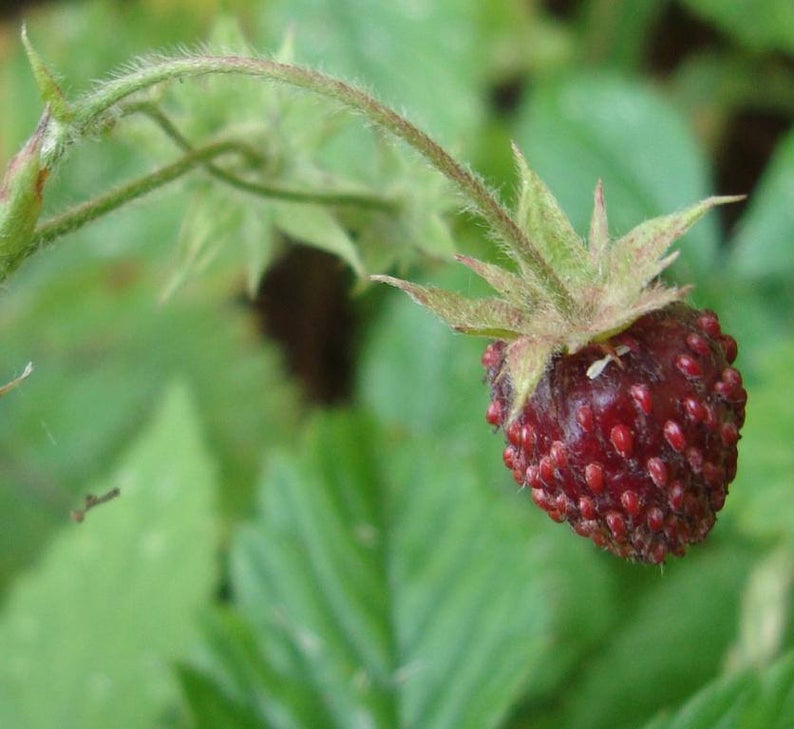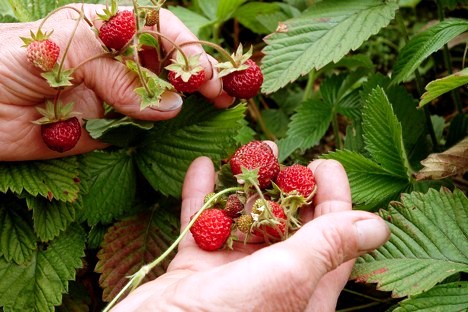
The offer is lots of 10 seeds for $8 plus add $4 to the order to cover p/p.
The musk strawberry or hautbois strawberry (Fragaria moschata), is a species of strawberry native to Europe. Its French name hautbois strawberry may be anglicised as hautboy strawberry.[ The plants are hardy and can survive in many weather conditions. They are cultivated commercially on a small scale, particularly in Italy. The fruit are small and round; they are used in the gourmet community for their intense aroma and flavour, which has been compared to a mixture of regular strawberry, raspberry and pineapple. Popular cultivated varieties include ‘Capron’ and ‘Profumata di Tortona’.
Musk Strawberries will set runners. Lots of them. In a woodland or natural landscape this is no problem, but in the garden you may choose to transplant these babies to keep the bed from becoming too crowded.
Musk strawberries grow wild to a limited extent in the forests of Central Europe, north into Scandinavia, and east into Russia.[5] The musk strawberry is found growing along the edges of forests and requires moist and sheltered sites since they do not tolerate temperature fluctuations.[citation needed]
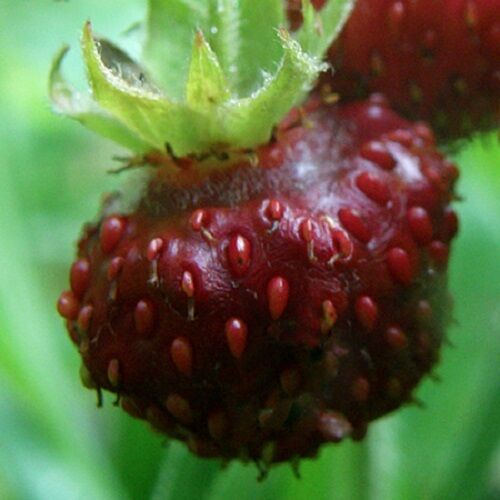
Polyploidy
All strawberries have a base haploid count of 7 chromosomes. Fragaria moschata is hexaploid, having six pairs of these chromosomes for a total of 42 chromosomes.
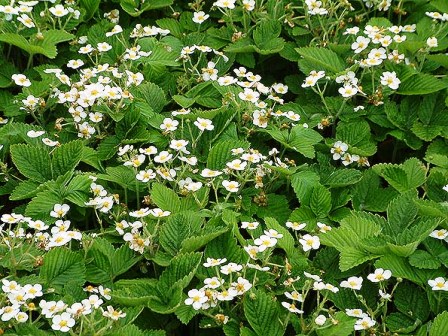
Cultivation
Musk strawberry has long been in cultivation in parts of Europe. This species was the first strawberry of any sort with a cultivar name, which was Le Chapiron (1576).[4] By 1591, the cultivar was called Chapiton, then later Capiton. In the early 17th century an illustration appeared in the Hortus Eystettensis as fraga fructu magno. It was mentioned by Quintinye, gardener to Louis XIV, as Capron in 1672.[4] At the beginning of the 19th century musk strawberries were the most common garden strawberry in Germany.[6]
Cultivation of musk strawberries is similar to that of garden strawberry (Fragaria × ananassa) or alpine strawberry (Fragaria vesca); the plants thrive in nutrient-rich soils. However, neither female plants nor hermaphrodite plants are self-fertile; they require pollen transfer from a male or a different hermaphrodite clone (or cultivar) of the same species, which is usually achieved by insect pollinators.
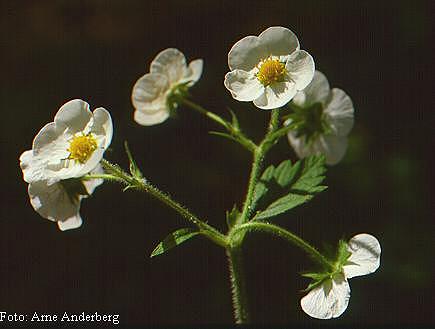
Trailing Form.
“The musk strawberry (Fragaria moschata), is a species of strawberry native to Europe. Its French name hautbois strawberry is anglicised as hautboy strawberry. The plants are hardy and can survive in many weather conditions and are cultivated commercially on a small scale, particularly in Italy. The fruit are small and round; they are used in the gourmet community for their intense aroma and superb flavour, which has been compared to a mixture of regular strawberry, raspberry and pineapple.
Musk strawberries grow wild to a limited extent in the forests of Central Europe, north into Scandinavia, and east into Russia. The musk strawberry is found growing along the edges of forests and requires moist and sheltered sites since they do not tolerate temperature fluctuations.
At the beginning of the 19th Century musk strawberries were the most common garden strawberry in Germany.
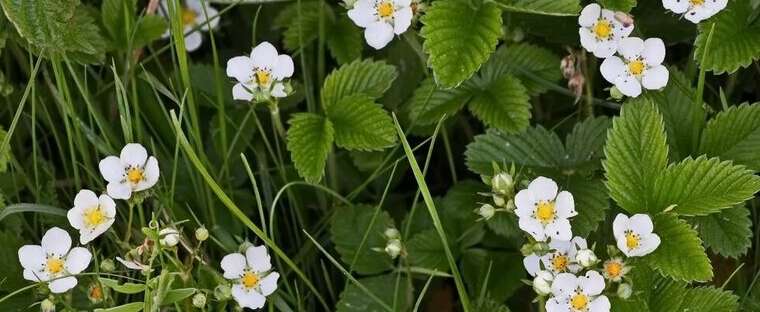
Cultivation of musk strawberries is not very different from that of garden strawberry (Fragaria × ananassa) or alpine strawberry (Fragaria vesca); the plants thrive in nutrient-rich soils. However, neither female plants nor hermaphrodite plants are self-fertile; they require pollen transfer from a male or a different hermaphrodite clone (or cultivar) of the same species, which is usually achieved by insect pollinators.” from Wikipedia.
“Prefers a fertile, well-drained, moisture retentive soil in a sunny position. Tolerates semi-shade though fruit production will be reduced. Succeeds in acid and alkaline soils. Likes a mulch of pine or spruce leaves. At one time this species was widely cultivated for its edible fruit, but it is fairly low yielding and has now been almost totally superseded by cultivars of F. x. ananassa (the garden strawberry)
It is hardy to zone 6 and is not frost tender. It is in flower from April to July, and the seeds ripen from June to August.
An excellent ground cover plant, spreading vigorously by means of surface stolons and forming a dense carpet of growth. It grows well amongst shrubs but is likely to suffocate smaller plants.
The fruit is small but has an excellent flavour and is very aromatic. It is greatly superior to the cultivated strawberries, but is not very freely produced.” from Plants for a Future.

See Grow Your Own Strawberries by Ken Muir of Honeypot Farm, Rectory Road, Weeley Heath, Clacton-on-Sea, Essex. CO16 9BJ Tel: 0870 74 79 111 or web: www.kenmuir.co.uk to obtain this excellent booklet that contains all one needs to know for the successful growing of the edible strawberry.
246 Strawberry Varieties including this one are detailed in Strawberry Varieties in America with history and cultivation details about strawberries from Grow Fruit.
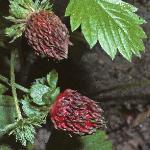
Family: Rosaceae
Synonym: Fragaria elator
Other names: Hautboy strawberry, hautbois
Musk strawberry is native to Europe. It grows wild to a limited extent in forests in Central Europe, north into Scandinavia, and east into Russia. But it has also been under cultivation in Europe since long. Some strawberry connoisseurs rate musk strawberry as the best flavored strawberry. Though its plants can still be seen in many gardens, but still there has been a decline in the cultivation of this fruit during the past 6-7 decades. However, its cultivation is still popular in Italy.
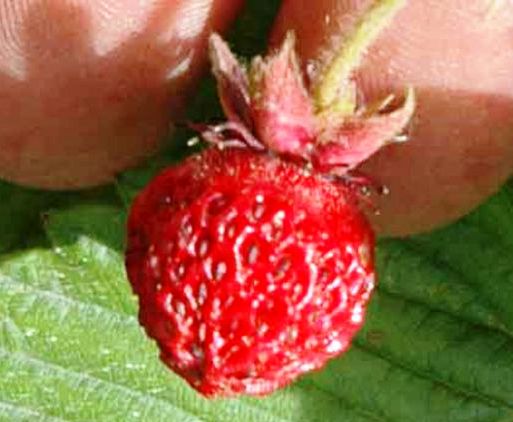
Description:
A small perennial herb with scant runners growing up to 40 cm; stem hairs spreading sideways–slightly descending oblique.
Leaves large, pale green downy, basal rosette, long-stalked; blade palmate, with 3 leaflets; leaflets elliptic, with toothed margins, hairy on both sides, often creased, base of lateral lobes unsymmetrical, central lobe wedge-shaped–blunt.
Dioecious; corolla regular, actinomorphic, white, 20-30 mm broad, petals five, 10–12 mm long; cfaly 5-lobed; with epicalyx; stamens 20; gynoecium separate, pistils several; inflorescence an umbellate cyme.
Fruit red, juicy, 1–2 cm long, berry almost acheneless; sepals in fruiting stage spreading–descending.
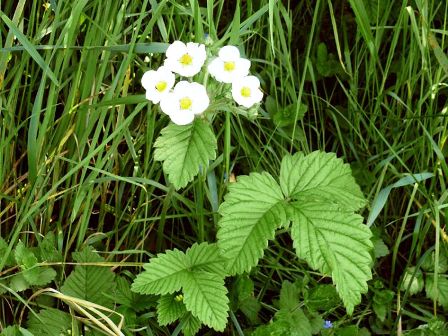
Utilization:
The fruits are eaten raw and put to all other uses like garden strawberries. As it has been stated earlier too, musk strawberry has been rated as the best flavored strawberry and therefore is the choice of strawberry connoisseurs.
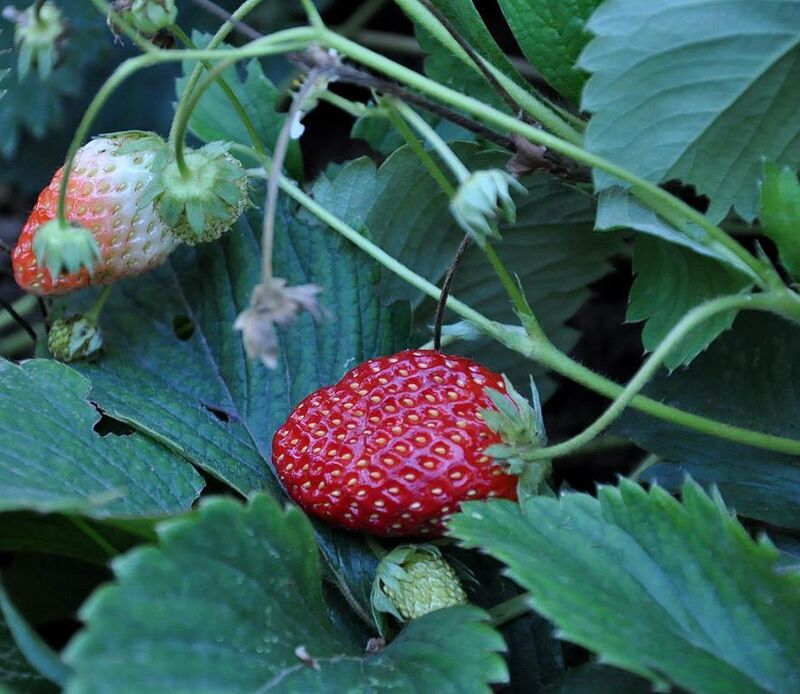
The intense aroma and superb flavour of musk strawberry fruits has been compared to a mixture of regular strawberry, raspberry and pineapple. However, the fruits are relatively maller sized and the production is also not as much as that of the regular garden strawberry.
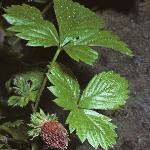
Cultivation:
The cultivation of musk strawberry is the same as with regular garden strawberry or Alpine strawberry. Its plants are, however, a little hardier and can therefore grow in a wider variety of weather conditions.
The plants perform best in a soil which is rich in nutrients.
Musk strawberry is not self fruiting. Even the hermaphrodite flowers would require cross pollination which is achieved by insect pollinators.
Any questions or if buying, contact me HERE


